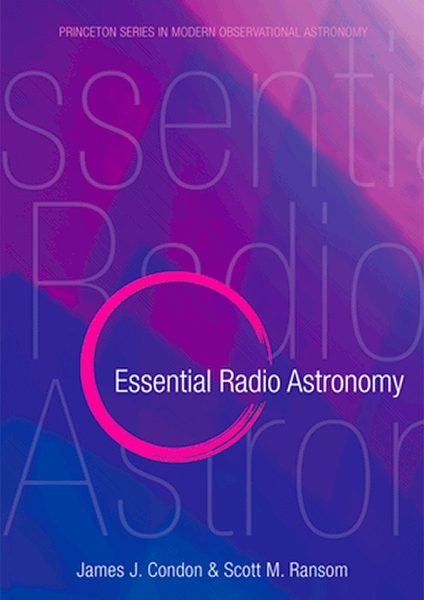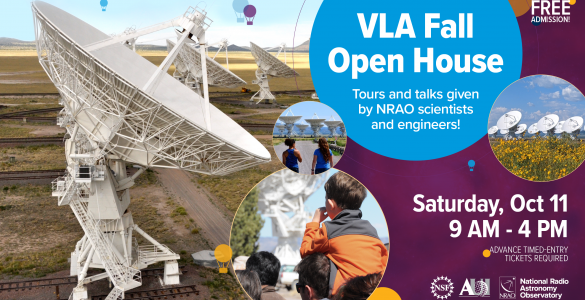2016 Edition Now Available from Princeton University Press
What is widely regarded as the quintessential textbook on introductory radio astronomy, Essential Radio Astronomy, has been published for the first time by Princeton University Press. Earlier editions were published and printed by the National Radio Astronomy Observatory (NRAO) primarily for local use in the University of Virginia’s radio astronomy course.
Written by NRAO astronomers James Condon and Scott Ransom, this textbook addresses the fundamentals of radio astronomy in a concise and thorough manner to support a one-semester introductory course in radio astronomy and radio astrophysics. It is aimed at both advanced undergraduate and graduate students who want a deep, working knowledge of the principles and practices that drive radio astronomy. The book also serves as a practical teaching guide for professors who are not expert radio astronomers as well as a useful reference for astronomers who routinely use single-dish and array radio telescopes.
Astronomy students typically spend only one semester learning the observing techniques that are unique to each wavelength – radio, infrared, X-ray, etc. Essential Radio Astronomy addresses this by presenting only the most crucial concepts in an approachable and thorough manner.
This textbook covers the general principles behind radio telescopes, receivers, and digital backends without getting bogged down in engineering details. Emphasizing the physical processes in radio sources, the book’s approach is shaped by the view that radio astronomy owes more to thermodynamics than electromagnetism.
“As our knowledge of the radio universe has grown, so too has the content in this book,” said Condon. “This most recent edition reflects not only the work of astronomers immersed in research, but also the new technologies that push our capabilities even further. I hope this textbook serves as a valuable stepping stone for the next generation of astronomers as well as a resource for the current multiwavelength astronomy community.”
Additional information on this textbooks can be found here:
http://press.princeton.edu/titles/10771.html












